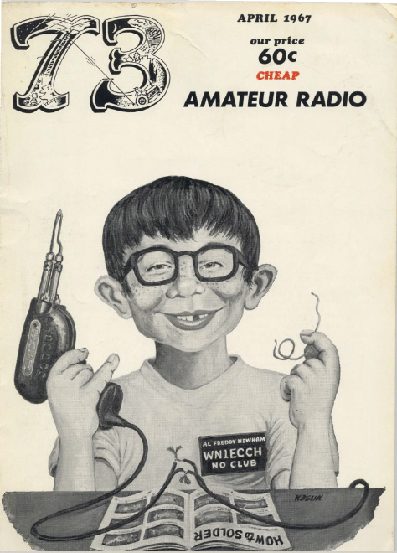


Antentop is FREE e-magazine devoted to Antennas and Amateur Radio an
Special page devoted to
Buried Antennas for Emergency Communications

Custom Search
|
ANTENTOP- 01- 2014 # 018 |
Buried
Antennas for Emergency Communications |
|
|
|
|
|
|
|
|
John J. Schultz W1DCG/W2EEY Credit Line: 73 MAGAZINE, April 1967, pp.:
34- 35 |
|
|
|
|
In this article, W1DCG describes some of the properties
of buried antennas, particularly in relation to their usefulness
for amateur Civil Defense or emergency communications installations. Many experiments have been conducted with sub- surface
antennas in recent years to allow construction of bomb- proof
communication sites and for communication with deeply submerged
submarines. Some scientists believe in the possibility of a super-
conductive medium in the earth's crust so that antennas could
be buried in the ground in an upside-down fashion and communications
established using this "earth ionosphere" much the same
as surface antennas work in conjunction with the ionosphere. However, experimenters in this field have not been
very successful and a buried antenna, for practical purposes,
can be treated as having useful propagation only above the surface.
The deeper the antenna is buried, the more inefficient it becomes
because of the earth's absorption of the radiated energy. What application do such antennas have for the amateurs?
Few amateurs are faced with such a drastic situation that they
can't put up some form of surface antenna, even if only attic
antenna for short whip. However, for those engaged in Civil Defense
or other emergency communications work, the installation of a
buried, "back- up" antenna at a fixed station should
be considered. |
Front Cover:
73 MAGAZINE, April 1967 It is quite a contradiction to see so many times an
emergency communications setup in a relatively protected area-
the basement of some public building, for instance- and then to
see the antennas on which the usefulness of the installation entirely
depends, dangling loosely in the open liable to any extreme surface
condition, natural or man- made. |
|
|
|
|
Page- 27 |
|
 |
 |
|
 |
Just for Fun:

Powered byIP2Location.com
Thanks for your time!
Last Updated:
January 5, 2020 23:09





